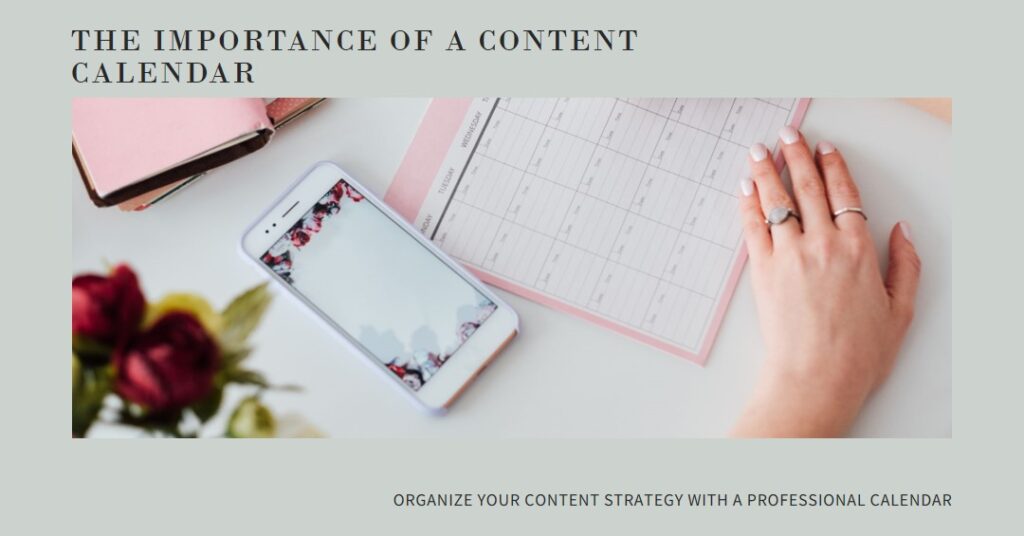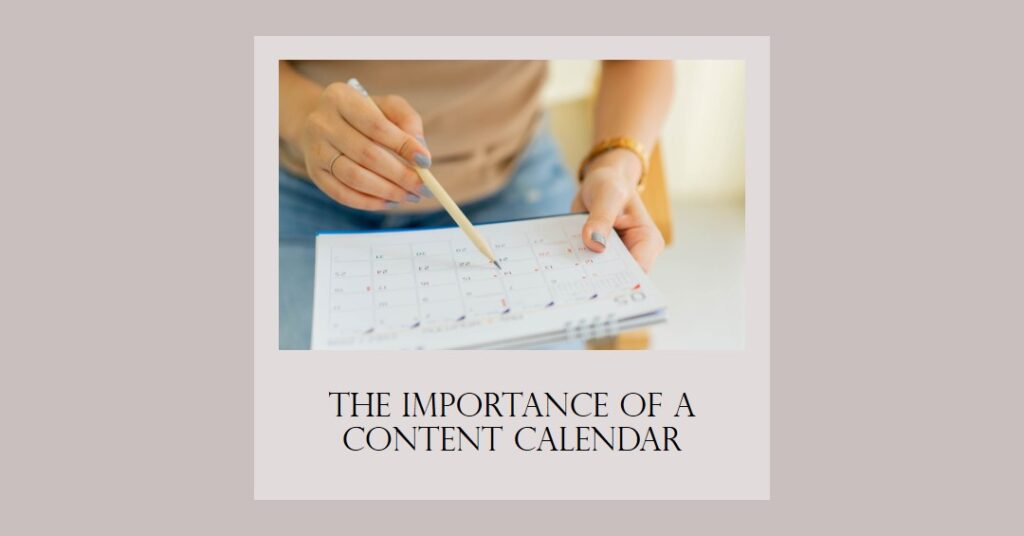Content calendar is a powerful tool used by businesses to stay organized and plan their content strategy. It helps in scheduling and managing blog posts, social media updates, and email newsletters. Content calendars provide structure and organization to creation chaos. It shows what content needs to be created, when it should be published, and who’s responsible. Plus, it’s a visual representation of the overall content strategy.
But why is a content calendar important? Without it, your content strategy is just as effective as whispering jokes in a library. To make the most of it, try these tips:
- Set goals: Be clear about what you want to achieve.
- Know target audience: Understand who your target audience is and what type of content they love.
- Plan ahead: Use the flexibility of a content calendar to plan content in advance.
- Monitor performance: Analyze how your content is performing, and make data-driven decisions for future planning.
Put these suggestions into practice and you’ll be able to use a content calendar to streamline your content creation process and reach your marketing objectives effectively. So start planning your next piece of content today!
Why is it Important?
A content calendar is essential for effective organization and planning of your content strategy. It provides a roadmap for creating and distributing valuable content on-time. It helps you to stay consistent in delivering content that resonates with your target audience.
By using a content calendar, you can plan and schedule your content based on important events, holidays, and trending topics. This allows you to align your content with relevant themes and maximize its impact. Furthermore, it enables you to maintain a balanced mix of different types of content, such as blog posts, social media updates, videos, and podcasts. This variety keeps your audience engaged and interested.
Moreover, a content calendar facilitates collaboration among team members involved in the content creation process. It serves as a platform where everyone can contribute ideas, suggest improvements, and keep track of deadlines. This streamlines workflow and ensures smooth coordination among team members.
Additionally, a well-planned content calendar can help improve SEO efforts by ensuring the consistent publication of high-quality and relevant content. This can boost website visibility in search engine rankings.
In conclusion, a comprehensive content calendar is an invaluable tool for any business or individual striving to create engaging content consistently. By organizing ideas, setting deadlines, and tracking progress through a schedule, you can optimize your efforts and achieve better results.
Pro Tip: Regularly evaluate the performance of your published content using analytics tools to identify patterns and insights. This will guide future planning and optimization strategies.
How to Create a Content Calendar
Creating a content calendar is essential for successful content planning and organization. Here are the steps to make one:
- Brainstorm: Think of ideas for content that fit your audience, goals, and key themes. Put down all ideas that come to mind.
- Prioritize: Choose the most relevant, timely, and in-demand topics from your list. This will help decide which topics to focus on first.
- Plan and Schedule: Assign the prioritized ideas to specific dates or time frames in the content calendar. Utilize a digital tool or spreadsheet to view the schedule and maintain consistency.
It’s important to review and update the content calendar as new chances or difficulties come up.
Let’s explore the fascinating history of content calendars!
Before the digital age, content calendars were made using pen and paper. Marketers would plan their campaigns months ahead, utilizing physical calendars with colorful notes for each piece of content.
These early innovators realized the importance of strategic planning and realized an ordered content calendar was essential to success. They would spend lots of time studying their calendars, changing dates and making sure content flowed well.
Nowadays, digital tools make creating and running content calendars simpler than ever. But, the same core concept remains – careful planning leads to great outcomes.
Tackle organizational mayhem with these tools and resources for making a content calendar – because chaos is best left for horror films, not your content strategy!
Tools and Resources
Creating a Content Calendar is crucial for successful content management. Here are some Tools and Resources to make the process simpler:
- 1. Digital Calendars: Use Google Calendar, Outlook, and Trello to generate and organize your content.
- 2. Content Management Systems: Utilize WordPress and HubSpot for creating and scheduling content.
- 3. Social Media Schedulers: Schedule social media posts in advance with Hootsuite and Buffer.
- 4. Editorial Calendars: Use CoSchedule or Airtable for comprehensive organization.
- 5. Analytics Tools: Track the performance of published content with Google Analytics or SEMrush.
- 6. Collaboration Platforms: Let multiple users contribute with Asana and Basecamp.
Besides these tools, remember to take into account other aspects. Consider target audience preferences, keyword research, upcoming industry events or holidays.
Did you know a well-planned content calendar can boost blog post views by 33%? According to HubSpot, businesses with an organized approach have higher engagement from their audience.
Managing and updating a content calendar is as complicated as organizing a zoo without any wranglers.
Tips for Managing and Updating Your Content Calendar
Managing a content calendar is super essential for effective content planning. It helps you organize and schedule content creation, guaranteeing consistency and timeliness. Here are some tricks to get the most out of it:
- Work out clear goals and objectives for your content. This will help you prioritize topics and determine how often you post.
- Use a digital tool or spreadsheet to make your content calendar. This will let multiple people access, collaborate, and update it.
- Plan ahead by making a publishing timetable. Pinpoint key dates, events, or holidays related to your industry and include them on your calendar.
- Frequently review and update your content calendar to show any changes or new ideas that may crop up during the planning.
You also need to assign tasks and due dates to your team to guarantee accountability.
Making and updating a content calendar needs a lot of attention to detail. By following these tips, you can make your workflow smoother and keep consistent communication in your organization.
A study from Content Marketing Institute showed that businesses with an exact content strategy are more likely to succeed in their marketing activities.
Warning: Thinking about successful content calendar tactics might make you more productive and cut down your Netflix marathon sessions.
Case Studies: Successful Content Strategies
Content calendars can be powerful tools for successful content marketing. Through detailed organization, businesses can create content that resonates with their audience. Case studies can unlock the tactics behind successful strategies.
For example, a fitness brand used a content calendar for informative articles and workouts. They kept their followers engaged and increased loyalty.
Another case study involved an e-commerce company promoting their new product launches. They planned blog posts, social media updates, and emails for maximum reach and impact.
These insights show the importance of careful planning when implementing a content calendar. Moz.com found that companies using an editorial calendar are 36% more likely to find success. That’s why structured planning is essential for your content marketing strategy.
In short, having a content calendar is like having a personal assistant who won’t roll their eyes at your bad jokes and actually gets things done.
Conclusion: The Benefits of Using a Content Calendar for Content Marketing.
Content calendars offer great advantages for content marketing. Firstly, they provide structure and organization, enabling you to plan ahead and maintain a steady flow of engaging material. Secondly, they keep you focused on your target audience and goals, creating content tailored to them. Thirdly, this tool allows for better coordination between team members.

Benefits go far beyond this. Content calendars help manage time effectively, avoiding last-minute rushes. Plus, they provide an overview of how each piece is performing, so you can make informed decisions.
Incorporating a content calendar into your workflow can be very beneficial for creativity and innovation. It opens up opportunities to come up with new ideas and formats. Plus, it allows for content to be aligned with seasonal trends or industry events.
Using a well-structured content calendar is key to a successful content marketing strategy. It helps with strategic planning, collaboration, time efficiency, data-driven insights, and creativity. Start using it now and take your content marketing to the next level!
Frequently Asked Questions
Q: What is a content calendar?
A: A content calendar is a tool used by content creators and marketers to plan, organize, and schedule their content creation and distribution. It helps in maintaining a consistent publishing schedule and ensures a cohesive content strategy.
Q: Why is a content calendar important?
A: A content calendar is important because it provides a structured approach to content creation and distribution. It helps in avoiding content gaps or overlaps, ensures timely delivery of content, and maintains a consistent brand image. It also allows for better collaboration and coordination among team members.
Q: How to create a content calendar?
A: To create a content calendar, start by identifying your target audience, goals, and key messages. Then, determine the frequency and channels of content distribution. Next, outline the topics and types of content you want to create. Finally, use a spreadsheet or specialized tools to schedule and track your content.
Q: What should be included in a content calendar?
A: A content calendar should include important dates (holidays, events), content titles, publish dates, content types (articles, videos), assigned creators, target channels (website, social media), and any additional notes or reminders for each piece of content.
Q: How to manage and maintain a content calendar?
A: To manage and maintain a content calendar, establish a regular review process to ensure updates and adjustments. Regularly communicate with team members to gather input and feedback. Monitor content performance and make necessary changes to improve effectiveness. Also, be flexible enough to accommodate any unexpected changes or opportunities.
Q: Are there any tools available for creating a content calendar?
A: Yes, there are several digital tools available for creating and managing content calendars. Some popular options include Google Sheets, Trello, Asana, CoSchedule, and Airtable. These tools provide features for collaboration, scheduling, and tracking content across different channels.

A prominent SEO and Business Analyst with 5+ years of experience helping businesses achieve growth



